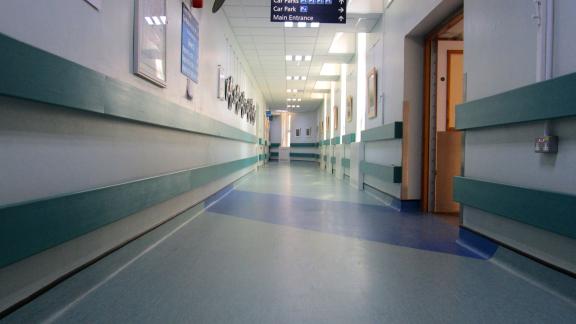Analysis: April release of NHS performance statistics

At a glance
- The NHS continues to deliver high levels of elective care, with 1.26 million people being removed from the waiting list in February. There has also been an impressive amount of activity on 104-week waiters, which reduced by nearly 500 despite high numbers of patients who were waiting just below 104 weeks crossing over the threshold during the month. However, today’s metrics also show significant pressure and deteriorating performance in emergency department waits and ambulance response times.
- This winter’s performance data has highlighted interdependencies along the patient pathway. We have seen how, as hospital occupancy or delayed discharge has risen, how quickly this can translate to increased waits at emergency departments and ambulance handover delays. This in turn has impacted ambulance response times, reflected in today’s figures. Everything is linked.
- In addition to these issues in patient flow through our hospitals, our members are also reporting reduced capacity due to high levels of staff sickness, continued COVID-19 prevalence and the ongoing need for infection prevention control (IPC) measures. One hospital leader told us that due to workforce challenges including absence, 20 per cent of elective theatre capacity was closed, and yet they are expected to deliver elective activity beyond pre-pandemic levels.
- There is a risk that the government’s ambitions for elective recovery and cancer waiting times will not be met if this pressure continues. The waiting list now stands at 6.18 million and performance against key cancer standards continues to look challenging, with both the two week wait for a first consultant appointment (80.7 per cent within standard) and two month wait for first treatment from urgent referral (62.1 per cent) improving this month but far below pre-pandemic levels.
NHS Confederation view
Given the interdependency between different health and care services and the mutual pressures being faced, it is vital for the NHS to move to whole-system thinking approaches. Key to this is a regulatory architecture that has the potential to support or prevent organisations working together. In 12 months, the Care Quality Commission’s (CQC) single assessment framework for systems and the providers and local authorities within them, will come online, with emphasis on assessing place and system-based working. In the meantime they will iteratively test their new approach with systems. We welcome this approach.
In the meantime, organisations are being forced to make difficult decisions in order to minimise risk to patients, and to work in suboptimal ways. The use of rapid handover protocols that compel emergency departments to take patients from ambulances can release ambulance capacity when there are no other options. but, every trust must operate with the concern that an unannounced inspection could leave them holding the baby, and all of the risk. This is manifestly unfair.
The Health Service Journal’s coverage of Sheffield Teaching Hospital reflected a trust that had been operating in ways they would never have wanted to, in times that are not normal, in the face of extreme pressure from their health and care system. In these times where the health system is operating at the margins, we need a strong regulator to be able to relieve this pressure, protect patient safety and staff. We also need one that thinks as a system, that recognises the complex portfolio of risk that is being carried by local leaders at a time of COVID-19, and does not penalise an organisation for taking on system risk in the impossible circumstances we find ourselves in.
Emergency care
Ambulance response times
Ambulance handover delays have deteriorated dramatically through the winter. Given the link between increases in ambulance response times, time lost to handover delays and resulting impacts for patients, this is a real concern. In one region this week, a member reported that at one point there were 130 ambulances waiting outside hospitals and nearly 50 had been waiting more than hour. Only two ambulances were available to send out to calls across the whole ambulance trust geography, and there were over 200 emergency calls waiting for an ambulance response. This is a pattern happening daily in many regions.
The effect on response times is clear. The average time taken nationally to respond to the most serious, life-threatening incidents in March rose to 9 minutes and 35 seconds, with the standard being 7 minutes. For comparison, in March 2020 the average response time was 8 minutes and 7 seconds, and exactly 7 minutes in March 2019. However, there were 81,857 category 1 incidents, much higher than the 59,560 and 61,693 in March 2019 and March 2020 respectively.
Since September, five out of the seven months have seen the most severe incident response times over 9 minutes. This had only been recorded once in the data (recorded in this format since 2017) in August 2017.
Category 2 calls meanwhile, which include heart attacks or strokes (calls classed as an emergency / potentially serious condition that may require rapid assessment or urgent on scene intervention or urgent transport) should be responded to within 18 minutes. The latest data shows a mean response time of over 1 hour and 1 minute, while 90 per cent should be within 40 minutes (in March, it was over 2 hours 17 minutes, the first time this has gone over 2 hours). In one region, the mean was as high as 1 hour 53 minutes, while 90 per cent were seen within four hours and 32 minutes, showing the sheer lengths of waits for ambulances experienced by large numbers of people.
As we noted in February, handover delays are not an ambulance issue, they are a whole-system issue impacted by challenges elsewhere including hospital capacity and patient flow. And they are causing serious problems.
A&E waiting times
Today’s data also shows a complex and difficult picture of A&E attendances. There were 1.42 million type 1 attendances in March, of which 58.6 per cent of attendances were completed within four hours.
The worst performance on record prior to the pandemic was 68.6 per cent in December 2019, and performance in February was the previous worst on record (60.8 per cent). Performance rebounded when A&E attendances dropped considerably at the start of the pandemic, but has since fallen dramatically over winter with the wide range of system pressures contributing.
As the chart below shows, it is not simply more attendances resulting in more pressure against the four-hour standard. For example, across November-February 2018/19, the average number of attendances per month was just shy of 1.3 million, but average monthly performance was 77.8 per cent. In the equivalent period this winter, there have been 1.26 million average attendances but performance has averaged 61.6 per cent.
Meanwhile there were 22,506 12-hour waits from decision to admit, to admission (or trolley waits, as they are known). The number of waits of this time could be even higher, as these are only waits from the point at which a decision is made to admit a patient. Across the whole of 2019, there were 8,272 12-hour trolley waits recorded, so March’s figure is 272 per cent of an entire year’s worth of 12-hour waits pre-pandemic.
This is the fifth successive month that there have been over 10,000 of these waits.
Elective backlog
The emergency pressure hampers the service’s ability to tackle the elective backlog by reducing available staffing and bed capacity. Today’s data shows that at the end of February there were 6.18 million people on the waiting list, up from 6.1 million in the previous month.
In February, 1.26 million people came off the waiting list, which is 93.8 per cent of the total activity in February 2020 pre-pandemic, when the figure was 1.34 million. In February 2021, this was just shy of 972,000.
Although the overall list increased, remarkably the NHS has reduced the numbers of long waiters in February. Patients waiting more than 52 weeks fell from 311,528 in January to 299,478 and the numbers waiting 104 weeks fell from 23,778 to 23,281.
This reduction in 104-week waiters of nearly 500 is particularly impressive and shows targeted work to reduce long waits. Last month’s data release showed there were 10,300 patients waiting between 100 and 104 weeks who would have tipped over the threshold. We would expect to see the total number of two-year waiters reduce further over the next few months (when data is available up until the end of April) as significantly fewer people joined the elective waiting list in April 2020 at the onset of the pandemic.
Cancer wait times
Performance against key cancer waiting standards has seen improvement but remains challenging.
80.7 per cent of patients in February had their first consultant appointment within two weeks of their urgent GP referral, which is an increase from January when performance was at 75 per cent. The below graph puts this in the context of previous years:
More positively in terms of volume of activity, the number of patients seen for a first appointment in February 2022 was 220,037, the highest February on record, surpassing the previous record of 190,369 in 2020 (performance against the standard was 92.6 per cent then). The last time the standard was met (May 2020) considerably fewer patients were seen with it being early in the COVID-19 pandemic (106,741).
For patients with breast symptoms (where cancer is not initially suspected,) 56.6 per cent were seen within two weeks. This is a, a small improvement on the record low of 49.4 per cent in January, but still extremely concerning. For context, across 2019, an average month saw 82.7 per cent seen within two weeks with an average 15,515 first appointments each month. At the start of 2022, if we take all of the first consultant appointments, the average is 53.1 per cent within two weeks with an average of 11,971 appointments each month. Our members have also told us of significant challenges with breast cancer imaging after first appointment, not having the capacity to confirm or exclude cancer.
In terms of the two- month wait from GP urgent referral to a first treatment for cancer, 62.1 per cent of patients had their first treatment within the standard in March (the second lowest percentage on record after January).
Finally, 74.1 per cent of patients in February were diagnosed within the new faster diagnosis standard (28 -day wait from urgent referral to patient being diagnosed with cancer or cancer definitively excluded), this was 63.8 per cent in January, with the operational standard (from Q3 2021/22) being 75 per cent.
Member feedback
Today’s data supports the messages our members have been telling us: they are under huge operational strain with pressures on urgent and emergency care unlike any seen previously, with high levels of COVID-19 continuing to cause an impact, too. One leader in the south commented that 18 per cent of their beds are currently taken up with COVID-10 patients, the highest it has been: “The idea that COVID-19 is over for us is just wrong.”
Another member told us that 20 per cent of their bed base included patients who could be discharged, but couldn’t due to pressures in the care sector. With staff absence rates at over 10 per cent and continued COVID-19 pressures across their wards, how can they be expected to deliver increased elective activity?
Meanwhile, a member in the southwest told us that 30 per cent of their elective theatres were closed due to a lack of staff, some of this absence, some longer term workforce challenges. They simply ‘can’t deliver’ more elective activity than pre-pandemic in line with targets with the situation as it is.
How is the NHS performing?
View our analysis of the latest NHS performance figures for a rounded view of how healthcare services are coping under immense pressure.



